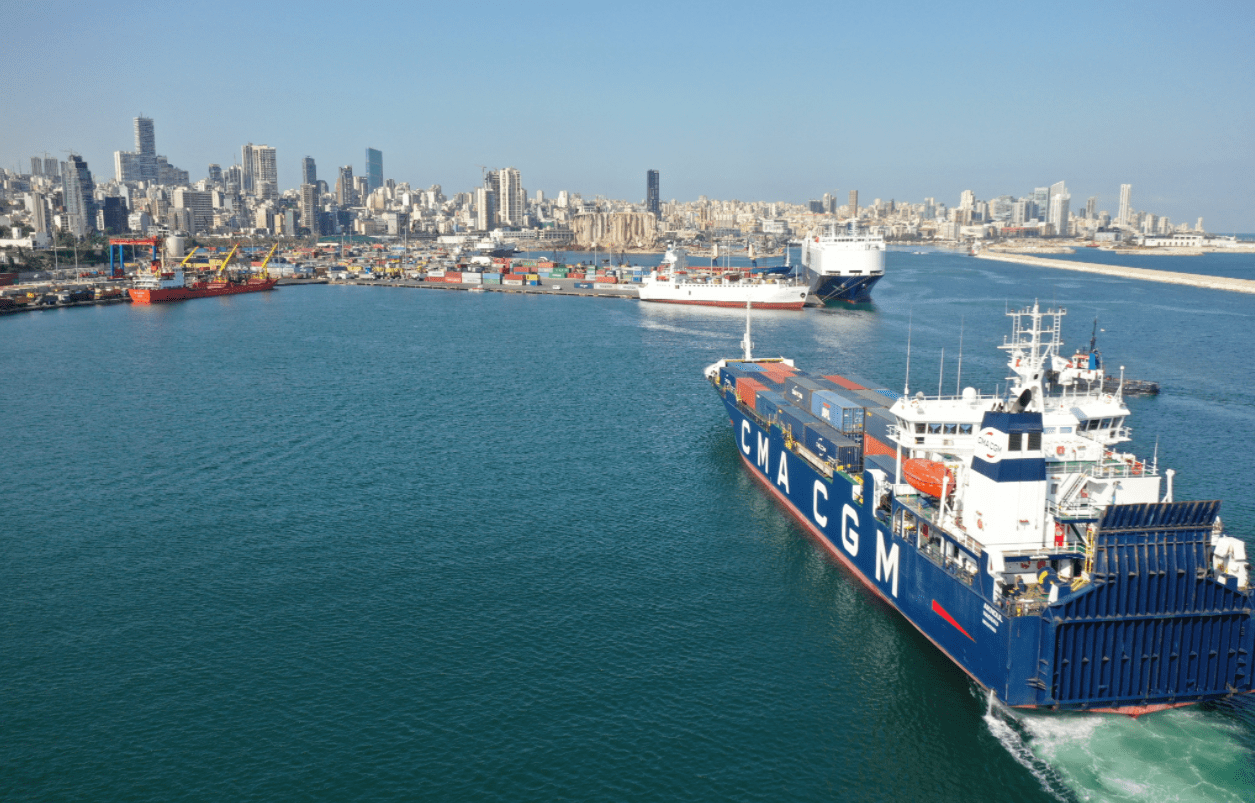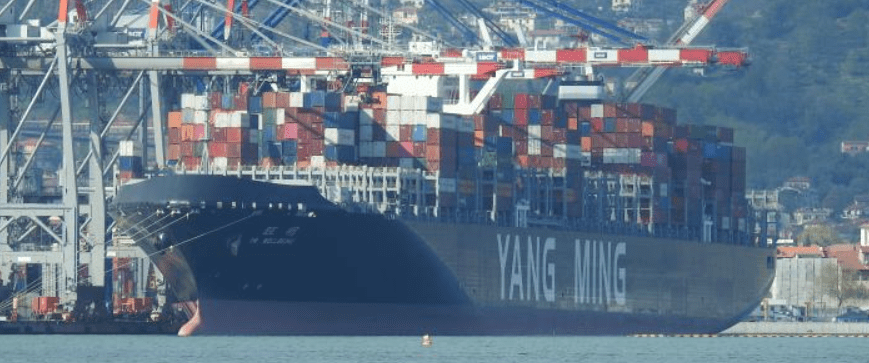
It comes as no surprise, that the shipping companies are the most crucial part of the global supply chain. The container shipping lines, with a current active fleet of over 6,200 vessels and a capacity of more than 24.9 million TEU, are transferring a major amount of any kind of goods and products across the world.
Below, there is a list of the 10 largest container shipping companies in the world in terms of TEU capacity, according to the Alphaliner figures (26 August 2021).
- Maersk – 4,222,017 TEU (733 ships)
| Headquarters | Copenhagen, Denmark |
| Number of offices worldwide | 296 |
| Number of employees | Over 83,000 |
| Year of establishment | 1904 |







Moving almost 20% of the world’s food, materials and goods in 130 countries, A.P. Moller – Maersk is the largest container shipping company for the last 25 years.
The Copenhagen-based logistics leader owns more than 900 subsidiaries, including APM Terminals, Hamburg Süd, Damco, Svitzer and Seago Line.
Maersk was not involved in the container sector until 1975, when its first container ship Adrian Maersk departed Newark, US, carrying 385 boxes. Nowadays, the carrier’s largest vessel, Madrid Maersk, has a capacity of 20,568TEU.
Maersk’s largest vessel: Madrid Maersk – 20,568TEU

2. Mediterranean Shipping Company (MSC) – 4,101,961 TEU (615 ships)
| Headquarters | Geneva, Switzerland |
| Number of offices worldwide | 524 |
| Number of employees | Over 100,000 |
| Year of establishment | 1970 |







MSC has evolved from a one-vessel operator into the second-largest container carrier with a fleet of 615 vessels calling at 500 ports on 215 trade routes and carrying approximately 21.5 million TEU annually.
MSC and Maersk form the largest container alliance in the world, named 2M Alliance.
The Swiss company has 51 ships with an overall capacity of 917,200TEU on its order book list, which means that it is expected to surpass its alliance partner, as the largest container line in the world, dethroning Maersk after more than two decades.
MSC’s largest vessel: MSC Gulsun – 23,756TEU

3. CMA CGM – 3,007,131 TEU (542 ships)
| Headquarters | Marseille, France |
| Number of offices worldwide | 755 |
| Number of employees | Over 110,000 |
| Year of establishment | 1978 |







CMA CGM constitutes the third-largest container carrier in the world. Its name comes from Compagnie Maritime d’Affrètement (CMA) and Compagnie Générale Maritime (CGM), which translates as “Maritime Freighting Company” and “General Maritime Company”.
The French shipping group has built a global presence in the maritime industry, owning 538 ships that conduct 285 services to 420 ports, while transporting almost 21 million TEU annually.
CMA CGM, which belongs to Ocean Alliance partnering with COSCO and Evergreen, has recently completed the significant acquisition of a series of nine Ultra Large Container Vessels (ULCVs) powered by LNG.
These nine vessels are the largest ones of the company with CMA CGM Jacques Saade being the first one delivered from the series and the carrier’s flagship vessel.
CMA CGM’s largest vessel: CMA CGM Jacques Saade – 23,000TEU

4. COSCO – 2,970,150 TEU (489 ships)
| Headquarters | Shanghai, China |
| Number of offices worldwide | Over 400 |
| Number of employees | Over 118,000 |
| Year of establishment | 1961 |







COSCO is now the fourth-largest shipping company in the world operating 54 domestic and 264 international services in 329 ports of 105 countries across the world.
The Chinese state-owned transportation company became part of Ocean Alliance in 2017 and constitutes one of the traditional powerhouses in the shipping sector.
COSCO’s largest vessel: COSCO Universe – 21,237TEU

5. Hapag-Lloyd – 1,780,304 TEU (259 ships)
| Headquarters | Hamburg, Germany |
| Number of offices worldwide | 394 |
| Number of employees | Over 13,000 |
| Year of establishment | 1970 |







Hapag-Lloyd was founded in 1970 after the integration of the German shipping companies Hamburg-Amerikanische Packetfahrt-Actien-Gesellschaft (Hapag) and Norddeutscher Lloyd.
Today, Hapag Lloyd ranks first among the largest German lines and fifth globally and has recently expanded its operations through the acquisitions of the carriers Compañía Sudamericana de Vapores (CSAV) in 2014, United Arab Shipping Company (UASC) in 2016, as well as NileDutch Transport & Shipping earlier this year.
The Hamburg-based liner operator carries annually 11.8 million TEU with 260 vessels conducting 121 services and calling on more than 600 ports in all continents.
Hapag-Lloyd’s largest vessel: Al Dahna – 19,870TEU

6. ONE (Ocean Network Express) – 1,592,173 TEU (218 ships)
| Headquarters | Singapore |
| Number of offices worldwide | 217 |
| Number of employees | Over 14,000 |
| Year of establishment | 2017 |







ONE was established in 2017 after the integration of the three Japanese shipping companies, K Line, MOL and NYK and got in the spotlight of the global logistics sector as it became the sixth-largest container carrier worldwide in less than three years.
Since then, the Singapore-based liner operator has already a service network covering over 120 countries as well as offices in 42 countries across the world aiming to further expand its global presence.
ONE’s largest vessel: MOL Treasure – 20,182TEU

7. Evergreen – 1,397,365 TEU (203 ships)
| Headquarters | Taipei, Taiwan |
| Number of offices worldwide | 80 |
| Number of employees | Over 10,000 |
| Year of establishment | 1968 |







The Taiwanese vessel owner was founded in 1968 with a single vessel in its fleet, called Central Trust, and in 2007 Evergreen Marine Corporation, Hatsu and Italia Marittima were merged into the single “Evergreen Line”.
Today, Evergreen serves over 315 locations across a broad array of trade lanes around the world. Ever Ace is the first of twelve 24,000TEU class container ships ordered by Evergreen and one of the largest container ships in the world.
Evergreen’s largest vessel: Ever Ace – 23,992TEU

8. HMM – 825,060 TEU (78 ships)
| Headquarters | Seoul, South Korea |
| Number of offices worldwide | 72 |
| Number of employees | Over 1,500 |
| Year of establishment | 1976 |







HMM, formerly known as Hyundai Merchant Marine, is the eighth largest shipping company, operating services in 110 countries and owning 24 subsidiaries as well as three container terminals around the world.
The Seoul-based carrier has currently owned the world’s twelve largest and most technologically advanced container ships of 24,000TEU maximum capacity each.
HMM’s largest vessel: HMM Algeciras – 23,964TEU

9. Yang Ming – 625,332 TEU (87 ships)
| Headquarters | Keelung, Taiwan |
| Number of offices worldwide | 228 |
| Number of employees | Over 6,400 |
| Year of establishment | 1972 |







Yang Ming Marine Transport Corporation which ranks ninth place of the largest carriers belongs to THE Alliance, along with Hapag Lloyd, ONE and HMM, and operates services at over 70 nations and 170 ports.
Although the Taiwanese line is mostly involved in intra-Asia transportation, it is permanently expanding its network with the establishment of its new subsidiary in France this year, showing Yang Ming’s interest in enhancing its European presence.
Yang Ming’s largest vessel: YM Wellbeing – 14,220TEU

10. Wan Hai – 425,221 TEU (149 ships)
| Headquarters | Taipei, Taiwan |
| Number of offices worldwide | 108 |
| Number of employees | Over 5,000 |
| Year of establishment | 1965 |







Wan Hai Lines was established in 1965 primarily as a log transportation company between Taiwan, Japan, and Southeast Asia, but in 1976 it became a full-container shipping company in order to fulfill the demand in containerised international trade.
Today, the Taipei-based carrier ranks among the ten largest container lines worldwide while it has expanded its services in Canada, the United States, South America, Africa and the Middle East.
Wan Hai’s largest vessel: Paranagua Express – 11,923TEU

Managing Editor Editor
Antonis Karamalegkos Vivi Dara








